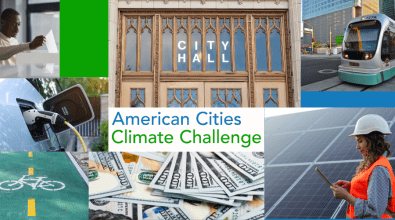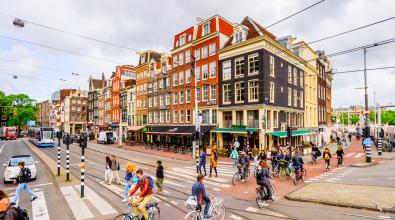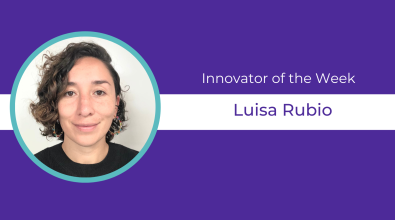What a Helsinki competition can teach all idea-seeking cities

When it comes to combating climate change, Helsinki has big ambitions and tight deadlines. The Finnish capital has pledged to eliminate coal from energy production by 2029 – no small feat for a city that currently gets more than half of its power from coal. More broadly, Helsinki also has pledged to become fully carbon neutral by 2035.
Helsinki Mayor Jan Vapaavuori wanted to look far and wide for big ideas for how to meet these goals. So in February of 2020, he announced the Helsinki Energy Challenge, an invitation to “innovators from all around the world to use our city as a testbed to develop not just fossil-free, but truly sustainable, solutions.” The goal was to find heating strategies that could be implemented before the 2029 coal deadline that didn’t rely on fossil fuels or burning biomass. The prize: €1 million.
Helsinki is the latest city to make use of an ideas competition, a crowdsourcing tool that goes back more than 300 years. Chicago used the approach last year to spark ideas about how to help restaurants serve patrons outdoors through a cold COVID winter. And Bloomberg Philanthropies’ own competition, the Mayors Challenge, is once again in full swing with 50 Champion Cities honing their ideas for a chance to win $1 million.
And the approach paid off: Despite the COVID-19 pandemic’s onset just a few weeks after the competition began, Helsinki received applications from 252 teams in 35 countries, a better response than expected. After an extensive judging process, four winners were selected to split the prize, including a couple of different takes on harvesting heat from seawater. Helsinki is now putting the solutions it found during the challenge into a “roadmap” to carbon-neutral heating.
What can other cities learn from its experience? There were a few key ingredients that made it work.
Defining the goal, and the prize
The size of the award Helsinki offered, €1 million, was meant to strike a balance.
It was “a high enough price to attract interest,” says Laura Uuttu-Deschryvere, who directed the challenge for the city. “But if we find a solution, it was a very, very small price .... but well worth it considering the importance of the topic.”
Another choice was whether to open the competition broadly to any relevant entry, or to create specialized categories. Ultimately, Uuttu-Deschryvere says she and the other staff members working on the energy challenge team decided that splitting up the challenge could dilute the overarching goal of heating the city without fossil fuels or biomass. So they nixed categories. That created more work to sort through applications, Uuttu-Deschryvere says, but it kept entries tightly focused on the goal of the competition.
[Get the latest innovation news from Bloomberg Cities! Subscribe to SPARK.]
Casting a wide net
The Helsinki Energy Challenge was meant to attract teams of applicants with a diversity of expertise and experience. City officials ran tailored digital campaigns on LinkedIn and spoke at clean-tech industry events to make sure energy experts, designers, and climate scientists learned about the challenge. The challenge team also hosted livestreams and webinars to answer questions about the process and worked with partner cities to help local teams prepare applications. And when it became clear that some potential entrants needed more time to submit applications, they extended the deadline a few times to make sure they could capture all the best ideas.
Working together
After the group received the first round of entries, city staff sorted through all of them with help from an advisory board of energy consultants, researchers, and other independent experts. The teams themselves were evaluated for their relevancy and diversity of expertise, and the proposals were evaluated against the selection criteria of the competition overall. Once city staff had selected ten finalists, they entered a “co-creation phase” with each of the remaining teams. During that phase, the city held a three-day “bootcamp” with city officials and industry experts so that teams could learn more about Helsinki’s heating system and have questions answered. Each team also received €10,000 during the co-creation phase to help pay for their additional work. The city had to follow what Uuttu-Deschryvere describes as “pretty strict public procurement legislation,” so she worked with a team of lawyers to make sure prize and compensation payments were made by the book.
Assembling the jury
Once the staff selected the ten finalists, they turned the remaining evaluation over to an international jury made up of experts in science, engineering, and energy economics. Teams submitted final proposals in January of 2021. The submissions were anonymous, so that the jury could only evaluate the quality of the proposal rather than the team members. Carlo Ratti, the Italian architect and engineer who led one of four winning teams, says the applicants were under strict guidelines not to speak publicly about their work to maintain the anonymity of the entries.
The jury worked in two phases. At first, each juror made their own assessments of each entry, which was “all done via an elaborate website,” says Robert Stoner, deputy director for science and technology at the MIT Energy Initiative and one of five jurors for the challenge. The jurors then “met twice for hours on end,” Stoner says. After a preliminary ranking process, they whittled the finalists down to a few remaining choices and tried to select one winning proposal.
“It became clear that there wasn’t going to be just one,” Stoner says.
[Read our explainer on crowdsourcing solutions]
Choosing the best solutions
Ultimately, the jury chose four teams to split the prize, which the city had said was a potential outcome from the beginning. In the end, says Stoner, there isn’t a single silver-bullet solution to Helsinki’s decarbonization challenges, nor to those in other cities. But the Helsinki Energy Challenge marshaled some of the best thinkers to propose ideas that the city can incorporate into a portfolio of strategies. And it raised awareness of the crisis, too.
“I think it was a great tool for the city to use in engaging the population on the subject of climate change and thinking collectively about how to solve the problem,” Stoner says. “That would be great for any American city. We don’t think about it enough.”
Uuttu-Deschryvere says the city is now in the process of analyzing the solutions that were proposed during the challenge and deciding how to incorporate them into a broad-based roadmap of actions to take to achieve its climate goals.
“There’s a lot that the city has to do. There’s a lot that our energy utility has to do. But also, there’s a lot we can do where third parties can play a role,” she says. “So, we have quite an ambitious project now that we have started to build … But it’s all thanks to this challenge that we did start to build that roadmap.”


